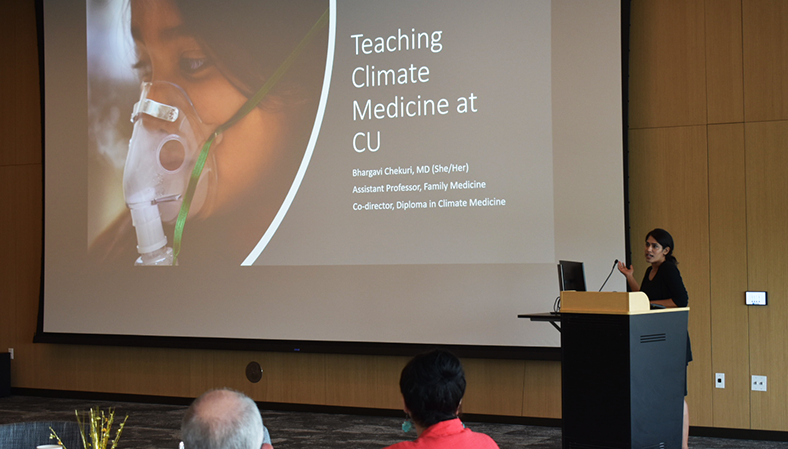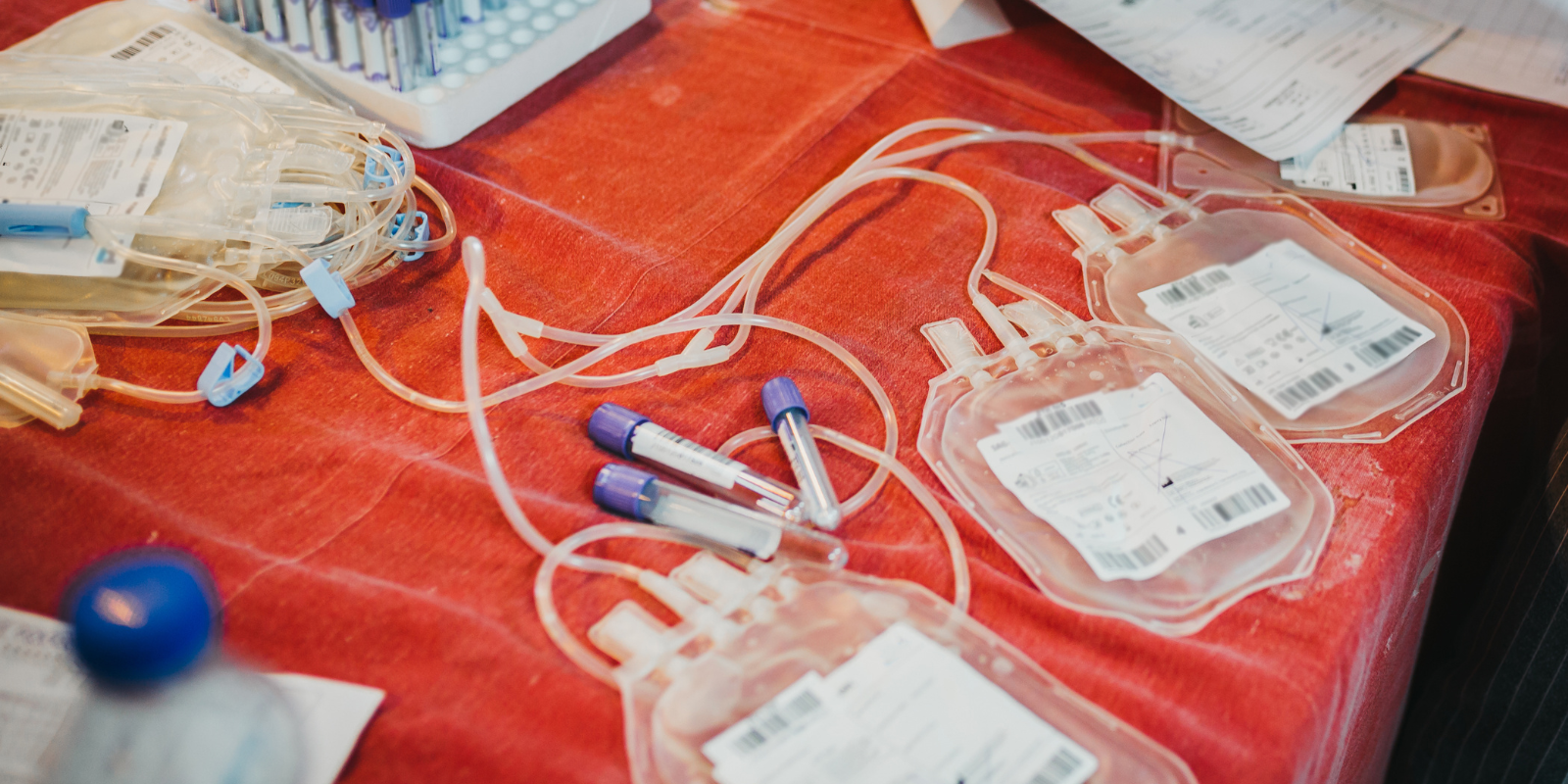The planet’s changing climate is associated with a host of threats to humankind, from droughts, extreme heat, and wildfires to flooding and destructive storms. Climate change is also having an impact on human health – including preventable injuries and violence.
That’s the focus of a new article, "Climate Change and Preventable Injuries," from University of Colorado School of Medicine leaders in research and education about the intersection of health and the environment. It’s part of an ongoing series on climate change and health in JAMA Insights.
The review summarizes recent research showing that climate change and resulting weather abnormalities are associated with rising rates of preventable injuries and violence. It cites data that worldwide climate-related disasters rose from 711 during the 1970s to 3,165 in the 2010s.
Co-author Bhargavi Chekuri, MD, is a family medicine assistant professor since 2022. She is on the faculty of the CU School of Medicine’s Climate & Health Program, and directs the school’s Diploma in Climate Medicine program, launched in 2022, and its Climate & Health Science Policy Fellowship. She was herself a climate fellow at CU.
→ From 2021: Climate Fellow Chekuri Supports Physicians in Becoming Climate Advocates
Chekuri says she and her colleagues “reviewed what’s known about this issue to see if we could quantify and describe the link between climate change and preventable injuries a little better. We identified a lot of research gaps. But we also found useful data and evidence when thinking about solutions.”
The article makes the case that clinicians and health care organizations have an important role in mitigating harm from climate change and in preparing themselves for providing care under extreme climate conditions.
CU a national leader
The CU School of Medicine has been a national leader in incorporating climate change into its medical curriculum – “something that more and more medical schools and nursing schools are starting to do,” Chekuri says. “When you survey students, routinely they say this is a topic that they are interested in learning, that they think is important.”
→ Diploma Program Training Clinicians as Leaders in Climate Medicine
She adds that health professionals “are starting to think about this problem, because it affects their patients and their day-to-day work. You can’t provide medical care if your hospital is closed, or if the road to it is blocked. And it’s hard to provide high quality care if you have no running water and the power’s out.”
The COVID-19 pandemic, which overlapped with roughly half of Chekuri’s residency, “was a preview for the types of demands that climate change will place on our clinics and hospitals in the future,” she says. “If you’re a health care worker or a first responder, you’re going to be asked to practice medicine in these high-stress environments, and that affects your health and your family’s health. It affects your ability to avoid getting burned out.”
VIDEO: Bhargavi Chekuri, MD, speaks on a panel about "Frontline Medical Care for Climate Change" at the Aspen Institute's Aspen Ideas: Health conference in June 2024.
Growing climate impact
Almost every day brings a new indication of climate change’s growing impact. Research by several faculty members at CU Boulder and elsewhere, published Oct. 24 in Science, shows that wildfires in the Western states grow twice as fast as they did 20 years earlier. And data from the National Oceanic and Atmospheric Administration show a steady rise in U.S. climate-related disasters that caused $1 billion or more in damage since 2000.
The new article from Chekuri and her colleagues offers a growing list of potential causes of death and injury during floods, hurricanes, temperature extremes, wildfires, and other climate-linked disasters, from getting struck by flying debris in a storm to drowning in a flood. And it points to other, perhaps less obvious links between climate and injury:
- “In addition to flood-related injuries and deaths, loss of power and damaged infrastructure can impair driving conditions and contribute to motor vehicle-related collisions.”
- “Exposure to extreme heat and drought is associated with higher rates of violence and suicide, although the mechanism of these associations remains unclear.” The essay cites a study estimating that of nearly 8,000 gun-violence events over a six-year period in 100 U.S. cities, 6.85% “were associated with above-average daily temperatures.”
- “People aged 65 years and older and those experiencing housing instability can have difficulty accessing warnings and relief services, such as cooling shelters and medical care, during disasters.”
- “People with disabilities, such as those with poor mobility, have a higher risk of falling when exposed to extreme weather.”
- “During and after extreme temperature events, women experience elevated rates of intimate partner and sexual violence.”
- “Extreme temperature events can amplify acute stressors and underlying risk factors, such as poor mental health, substance abuse, socioeconomic instability, failure of law enforcement, housing insecurity, and displacement.”
- “People working outdoors in agriculture, construction, or transportation can have higher occupational exposure to extreme heat, which can increase injury from burns, wounds, lacerations, and physical trauma.”
Adapting to changing climate
On the other hand, the article notes that even while global climate disasters have increased over recent decades, deaths have decreased, largely due to improved weather forecasting, early warning and response systems, and disaster management.
That’s where medical professionals can play a crucial part, the article says: “Health care workers and organizations can communicate to their patients and communities the importance of early warning systems to mitigate disaster risks. Families who discuss emergency planning with their primary care physician are more likely to adhere to disaster preparedness than those who do not.”
The article says health care facilities need to bolster their resiliency to climate events “by investing in disaster preparation, response, and recovery.” It recommends drafting and frequently updating hazard vulnerability analyses at hospitals and clinics, covering risks such as extreme heat and flooding. It also calls for emergency-management exercises and training in how to respond to power failures, a rapid influx of patients, and other consequences of climate disasters.
→ From Crisis to Action: CU’s Climate Health Champions in Focus
Says Chekuri: “When there’s a blizzard coming, everybody in the health system, from the clinicians to the front desk to the janitorial staff, knows they need to prepare for it. But we don’t always know what to do when there’s a heat wave or a really bad air pollution day. We don’t think enough about the same kinds of preparatory steps for the wider range of climate related disasters. We have to adapt to the changing climate as a system.”
The essay’s co-authors were Jay Lemery, MD, a professor in the CU Department of Emergency Medicine and director of the School of Medicine’s Climate & Health Program, and Terry O’Connor, MD, a former leader in the program. An avid outdoorsman, O’Connor died in an avalanche while backcountry skiing in Idaho in May 2024. In O’Connor’s obituary, Chekuri wrote: “His legacy is to inspire each of us to act in service of our planet and each other.”
Photo at top: Bhargavi Chekuri, MD, gives a presentation on teaching climate medicine at CU in 2022.



